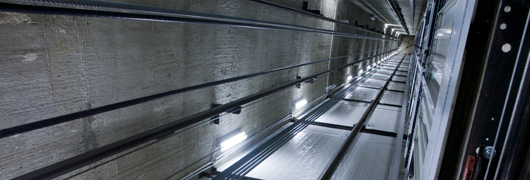Oleo-hydraulic elevators

The hydraulic elevator, also called ‘oleo-hydraulic’, is proposed as an alternative to ‘traditional’ elevators.
The principle of operation is very simple: the cab is connected to a piston-cylinder system in which mineral oil under pressure is entered and discharged with a flow rate controlled by a valve. Uphill a hydraulic pump pushes the liquid into the cylinder causing the extension of the stem and therefore the ascent of the cabin, while the descent is by gravity, by controlling the outflow of oil from the cylinder.
The ‘hydraulic’ elevator has the advantage of allowing great flexibility in the choice of the configuration of the system given the reduced dimensions of the mechanical parts in the compartment and the absence of the counterweight. Moreover, by releasing the entire weight of the elevator at the base of the building, it is possible to reduce the weight of the building.
This solution is well suited to installation in buildings that were originally without an elevator and therefore not calculated to endure the weight .
The possibility of arranging the control equipment and the power unit (ECU) in any position allowed the hydraulic systems to develop the MRL (Machine Room Less) solution in a simple way. The use of special cabinets containing the control panel, the distribution panel and the control unit is very widespread.



